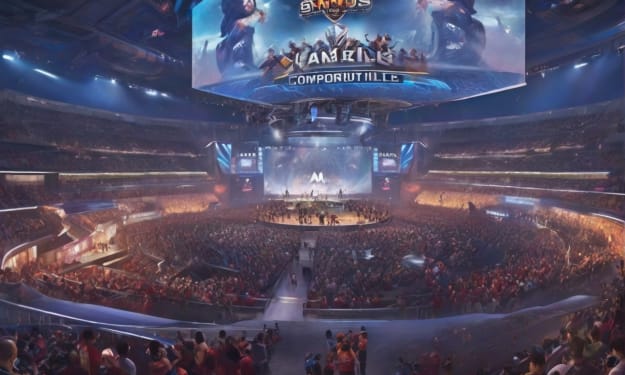The Dark Future of R. Talsorian Games "Cyberpunk"
The Alternate History of the Cyberpunk TTRPG

I’m a fan of alternate history stories. The main reason I like them is that they are a classic case of Socratic questioning: Suppose _____ is true, what happens next? Role-playing games like Dungeons and Dragons, Warhammer Fantasy, and others that are more based in medieval European-style settings don’t have to worry about this to a large degree. But game systems like Cyberpunk do, which lends an element of creative storytelling that fills in the gaps for a Gamemaster to use for crafting their own stories set in this world. The alternate history crafted for R. Talsorian Games’ Cyberpunk series is one of the better ones I’ve come across, adding depth to a futuristic setting and explaining how the Dark Future available for Gamemasters and players makes a certain amount of sense.
This will most likely be a multi-part essay series but before getting into the nuts and bolts, I want to address one thing right off the bat. Anyone who has ever been a Gamemaster (Referee, Storyteller, Dungeon Master, etc.) knows that the canonicity of the sourcebook is open for interpretation and adjustment. Homebrew settings (aka settings created by the Gamemaster running the game) are the norm for quite a lot of people who enjoy table-top role-playing games (myself included). These essays are mainly going to be focusing on the canon timeline and events presented in the most recent iteration of the game, Cyberpunk Red (starting on page 233 in the core rulebook).
The big event that kickstarts the fall of America and the rise of the Dark Future is the Gang of Four, a shadow council comprised of the directors of the CIA, NSA, DEA, and the FBI, all under the control of the Vice President of the United States. This cabal was in the pocket of the early corporations, working to control the new American Manifest Destiny but in the process, destroying everything that the country had. Using a vastly over-funded military, the Gang of Four used warfare to create a new imperialistic America, one that would expand its influence by force and coercion whenever possible.
Doesn’t sound too much like science fiction after the last twenty years since 9/11, does it?
Keep in mind, the original iteration of Cyberpunk was published in 1988. The second edition, Cyberpunk 2020, was published in 1990 and stood as the main edition of the game for nearly thirty years (there’s a third edition but it isn’t really talked about anymore) until the release of Cyberpunk Red. The Gang of Four story resonates now even stronger than it did thirty years ago primarily because the circumstances that were vaguely outlined can be totally believable. The main reason alternate history stories fail so often is that the stretching of plausibility breaks immersion in the setting. Move too far away from believability and your audience won’t buy the setting at all.
The Gang of Four use their coup d’état to kickstart a conflict in Central America, fanning the flames of war by selling the public on the conflict by stating it was to fight communism, narcotics, and terrorism. In reality, it was mainly a way for the Gang of Four to gain control of the drug trade. To further this goal, the DEA and CIA used bio-terrorism to devastate the coca plantations in South and Central America, as well as the poppy fields in Central Asia. With the livelihood sustained through the drug trade destroyed, economies in those regions withered. The Central America conflict results in thousands of dead and wounded Americans. The drug lords of South and Central America weren’t going down without a fight, creating a guerilla army to defend their territory. This culminated in a group of Colombian drug lords purchasing a suitcase nuclear device and detonating it in the Financial District of New York City, killing thousands in an instant.
The idea of a war being fought for dubious reasons and largely for the financial gain of a select few isn’t a new concept, which again speaks to the idea of why this alternate history in Cyberpunk works as well as it does. Every step in the process, regardless of how outlandish it may sound on paper, is plausible within the confines of the setting. There’s a concept in storytelling called Internal Consistency, meaning the setting sets a tone and rules for how the world works and then sticks to them. The rise of a group like the Gang of Four and their far-reaching power is far-fetched (to some degree) from a real-world perspective but within the setting of the game system, it fits the tropes cyberpunk as a genre works with, namely that shadowy cabals and backroom deals with corporations are how power in the world is exerted (at least in the beginning).
With the rise of the Gang of Four and their corruption of the government, the second major event occurs: the World Stock Market Crash of 1994. Due to the manipulations of the Gang of Four, the European Union discovers that the Gang have been manipulating the stock marks of both Asia and Europe, hoping to enrich themselves through shell corporations and companies. The Crash of ’94 seals the fate of millions, leading to 1 in 4 Americans becoming homeless. This indigent population later gives rise to the earliest Nomad Families, collections of individuals traveling the roads searching for work and protection in numbers. Shortly after the Crash, both the President and Vice President are assassinated, leaving the Gang of Four in complete control of the government. The troops from the Central American conflict are recalled and martial law is declared in America.
Sounds scary as hell, doesn’t it?
Dystopian stories like Cyberpunk are all about how the world as we know it collapses and what happens after that. Without the safety net society provides us, people as a whole are left to their own devices. Zombie Apocalypse stories like The Walking Dead play on the same tropes (with the added horror of mindless zombies that feast of the living for added effect). The question these kinds of stories ask is: what are we as a species like when the rules are removed? The answer Cyberpunk and other dystopian settings provide is bleak and unapologetic.
We are at our worst when everything falls to pieces.
I’ll continue this line of thought and examine more of the setting for R. Talsorian Games’ Cyberpunk game in a future essay.
About the Creator
Nicholas King
I'm a graduate of the University of South Florida's Creative Writing program. Currently, I reside in Florida, where I've spent the majority of life. In my spare time, I write fiction and poetry.






Comments
There are no comments for this story
Be the first to respond and start the conversation.